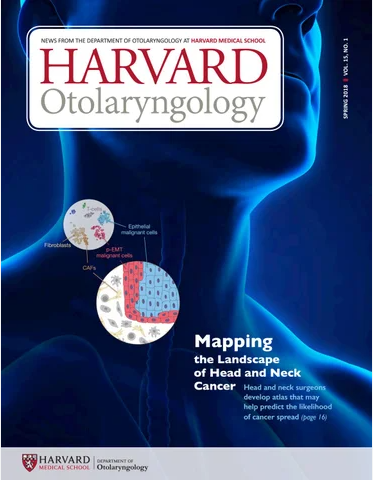A Deep Dive into Otolaryngology Medical Resources
Otolaryngology, commonly known as ENT (Ear, Nose, and Throat), is a specialized field of medicine focused on diagnosing, treating, and preventing disorders related to the head and neck. This article explores key otolaryngology medical resources, providing an in-depth look at the tools and techniques available to professionals in this important field.
Understanding Otolaryngology and Its Scope
Otolaryngology covers a wide range of medical conditions that affect the ear, nose, throat, and related structures of the head and neck. These conditions can vary from common illnesses like sore throats to complex diseases such as head and neck cancers. The scope of otolaryngology also includes subspecialties like pediatric ENT, otology, rhinology, laryngology, and facial plastic and reconstructive surgery.
In recent years, the field of otolaryngology has seen significant advancements due to improved technologies, new medical practices, and innovative treatments. As a result, otolaryngologists now have access to a broader array of tools to enhance patient care and outcomes.

Key Medical Resources in Otolaryngology
1. Diagnostic Tools
Accurate diagnosis is crucial in otolaryngology to ensure proper treatment plans. There are several diagnostic tools used by ENT specialists:
a) Audiometry
Audiometry is used to measure a patient’s hearing ability. It is essential for diagnosing conditions such as hearing loss or tinnitus. The test involves listening to various sounds at different frequencies and volumes to assess hearing function.
b) Nasal Endoscopy
Nasal endoscopy involves using a small camera (endoscope) inserted through the nose to examine the nasal passages and sinuses. This procedure helps identify issues such as nasal polyps, infections, or anatomical abnormalities.
c) Laryngoscopy
Laryngoscopy is used to examine the larynx (voice box) and is an essential tool for diagnosing voice disorders, cancers, and other throat-related problems. It can be performed using a flexible or rigid scope.
d) CT and MRI Scans
Advanced imaging techniques like CT (Computed Tomography) and MRI (Magnetic Resonance Imaging) scans are invaluable in otolaryngology for visualizing structures in the head and neck. These imaging methods help detect tumors, sinusitis, and other complex conditions that require detailed visualization.
2. Treatment Options Otolaryngology Medical Resources
Otolaryngology involves a range of treatment options depending on the condition. These treatments can be medical, surgical, or a combination of both.
a) Medications
Medications are often prescribed for conditions like sinus infections, allergies, and ear infections. Common drugs include antihistamines, nasal decongestants, antibiotics, and corticosteroids.
b) Surgical Interventions
Surgical procedures in otolaryngology are common for conditions like sleep apnea, chronic sinusitis, and cancers of the head and neck. Some common surgeries include:
- Tonsillectomy: Removal of the tonsils, often performed in children to treat recurrent throat infections.
- Septoplasty: Surgery to correct a deviated septum, improving airflow through the nose.
- Myringotomy: A procedure to drain fluid from the middle ear, typically performed in children with chronic ear infections.
c) Hearing Aids and Cochlear Implants
For patients suffering from hearing loss, hearing aids and cochlear implants can significantly improve quality of life. Hearing aids amplify sound, while cochlear implants provide direct stimulation to the auditory nerve in severe cases. View more on Google
3. Continuing Education and Professional Resources
Otolaryngologists must keep up-to-date with the latest advancements in the field to provide the best care for their patients. Several resources help ENT specialists stay informed about new research, technologies, and treatment protocols.
a) Medical Journals
Journals like The Laryngoscope and Otolaryngology–Head and Neck Surgery publish peer-reviewed studies and clinical research relevant to the practice of otolaryngology. These journals are crucial for keeping professionals updated on the latest breakthroughs in the field.
b) Medical Conferences
Conferences such as the American Academy of Otolaryngology-Head and Neck Surgery (AAO-HNS) Annual Meeting provide opportunities for professionals to network, learn, and share knowledge. These events often feature workshops, seminars, and presentations on new techniques, treatments, and research findings.
c) Online Databases
Online resources like PubMed and UpToDate provide access to an extensive database of clinical studies, case reports, and review articles. These platforms are widely used by healthcare professionals for evidence-based information.

The Future of Otolaryngology: Innovations and Advancements
As technology continues to advance, otolaryngology is likely to evolve in ways that improve diagnosis, treatment, and patient care. From robotic surgery to telemedicine consultations, the future of ENT medicine looks promising.
For instance, robotic-assisted surgery allows for more precise and minimally invasive procedures, leading to faster recovery times and better outcomes. Additionally, AI-powered diagnostic tools are emerging, enabling faster and more accurate identification of conditions.
Conclusion Otolaryngology Medical Resources
In summary, otolaryngology is a dynamic and diverse medical field that requires a wide range of resources, from diagnostic tools and treatment options to ongoing professional development. As technology continues to advance, the medical community will undoubtedly continue to make strides in improving patient outcomes. For otolaryngologists, staying informed about new research and innovations is critical for providing the best care to those affected by ear, nose, and throat conditions.
Learn more about dental books

